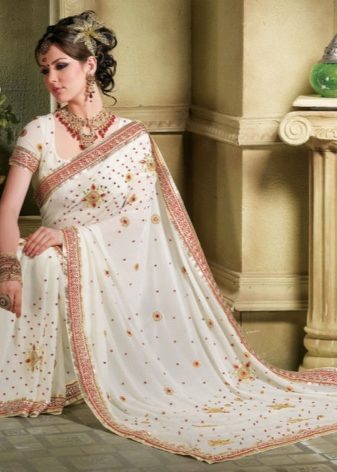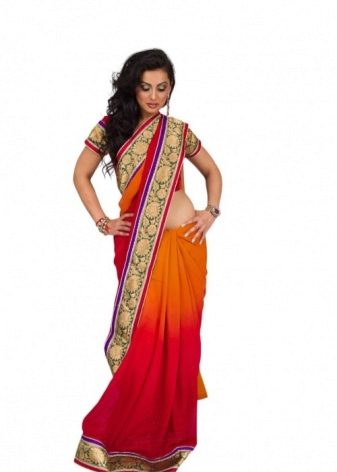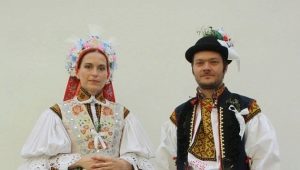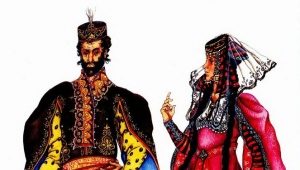National costume of India
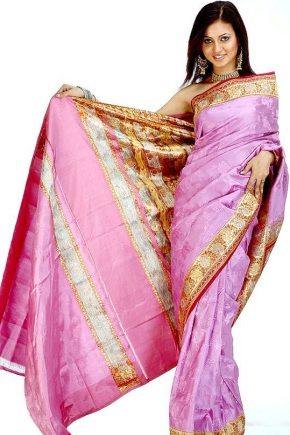
A bit of history
The costume of any nation always reflects its history, culture, climatic features of the country, living conditions of people, attitude to religion. All this can be traced in the Indian costume.
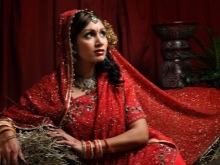
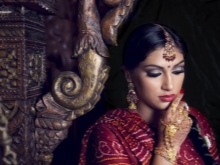
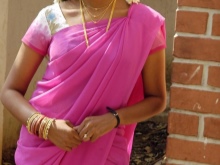
The hot climate contributed to the fact that clothes were made from fine cotton or linen fabrics. For a long time they remained white - this is practical in those climatic conditions. But for the Hindus, each color had its own meaning, and gradually the clothes became colored.
And since India is a country with a large number of regions, the costumes differed in colors, patterns, and ways of wearing.
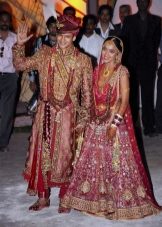

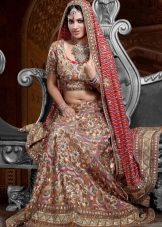
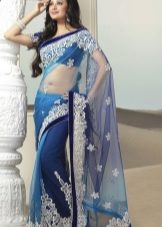
In addition, the people of India since ancient times were divided into castes, and each was assigned its own clothes. One could judge belonging to one or another caste by the length of the dhoti. Dhoti is a type of pants made from a long strip of cloth.

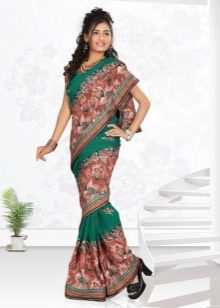
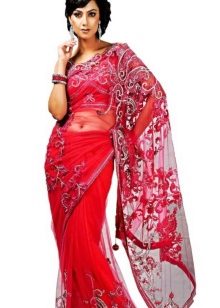
Peculiarities
Indian clothing has its own distinct differences; it is difficult to confuse it with the national costumes of other countries.
First of all, these are skillful draperies made of solid pieces of fabric. Their complexity varies depending on the situation. An abundance of voluminous jewelry and bright make-up for women are obligatory for the festive season.
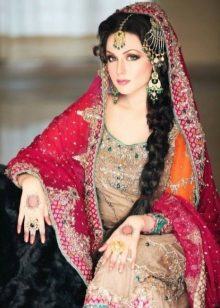
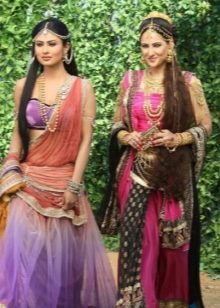
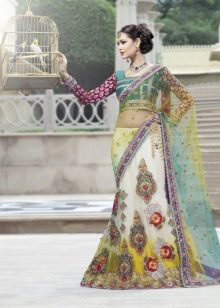
Men wear a kind of headdress - a turban. It is also a draped fabric.
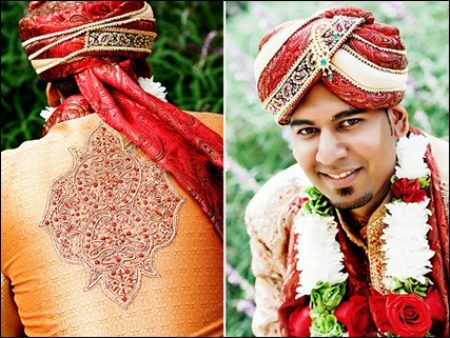
Such clothing has its advantages.
The turban perfectly protects the head from the scorching sun.Put it on wet. Layering prevents the evaporation of moisture, which saves from heat stroke.
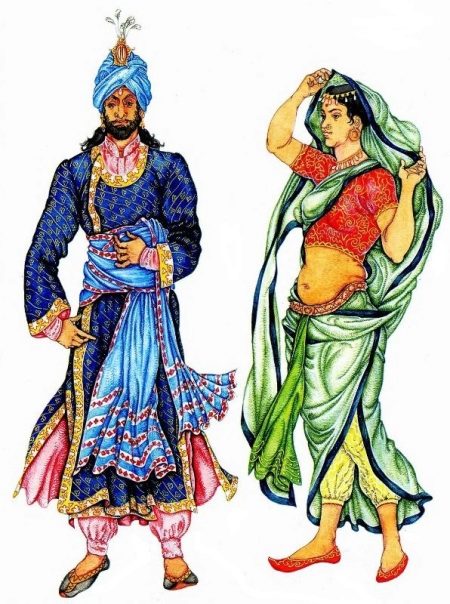
Although the Indian outfit has an unusual look for Europeans, it is very practical and comfortable, does not restrict movement. The fair sex in these clothes have a more feminine and slim look.
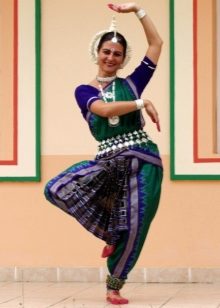
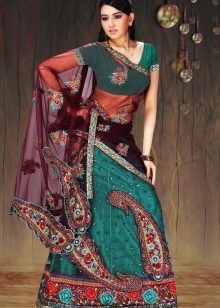
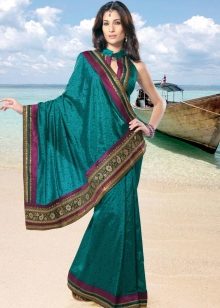
An interesting feature - the outfit is not fastened with clasps and pins.
Outfit Description
The basis of the male national costume is dhoti. A strip of fabric about 5 meters long is draped around the body and legs. The ends of the fabric are laid behind the belt. Most often the fabric is white, but other solid colors are also acceptable. A border may be present.
Dhotis for everyday wear are made from simple cotton fabrics. Festive - from materials of finer dressing or from silk. They have a rich decoration in the form of a gold border.
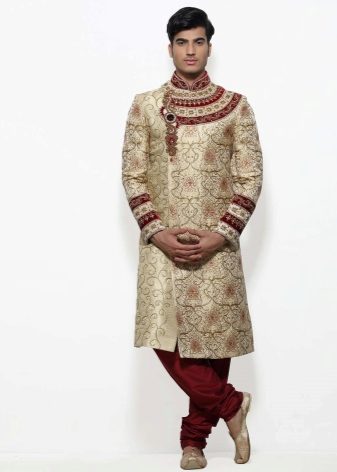

The dhoti is complemented by a kurta, a long, wide shirt worn on top. It, like dhoti, is made of cotton or silk fabrics. For cooler seasons, denser fabrics, such as wool, are used. Any color can be. Casual jackets are simple, plain. Festive - brighter, decorated with embroidery. This type of clothing does not have a collar.
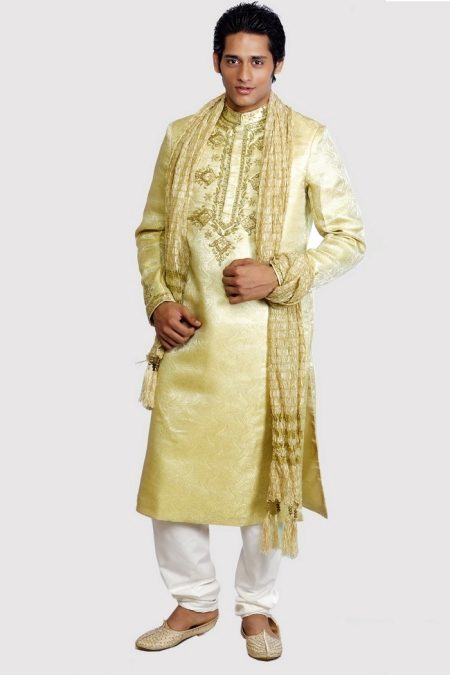
In some regions of India, men wear a cape on their shoulders, it can be colored.
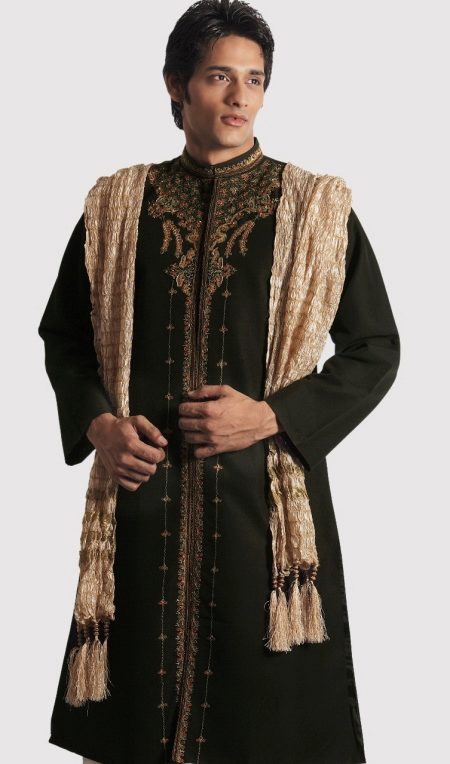
Kurta is also worn with pants, which are of two types. The first is long tight pants. Especially in order for them to gather in folds, they are cut out longer than the legs. Another type is very loose trousers, they are not narrowed to the bottom.
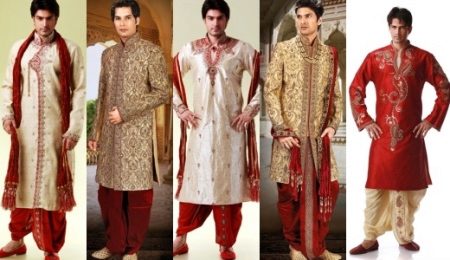
Another type of men's national clothing is a frock coat. It is called shirvani. Its length falls below the knee, it fastens to the collar. Wear it with tight or wide pants.
Since this is, as a rule, festive clothing, the frock coat looks accordingly. It is made of bright fabrics, plain or patterned, decorated with embroideries and sequins.
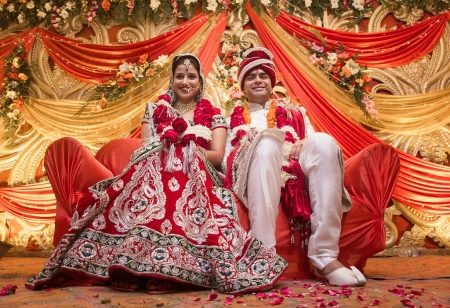
A turban completes the outfit. On the occasion of the holiday, it can also be decorated with precious stones, beads, sparkles, feathers.

Clothing by which an Indian woman can always be distinguished from a representative of other nations is a sari. It is a strip of thin cotton or silk fabric 7-9 meters long. It is draped around the hips, and the end is thrown over the shoulder to the chest. Under the sari, wear a petticoat and blouse.
The color of the sari can be absolutely any. Widespread as one-color saris, and with drawings.
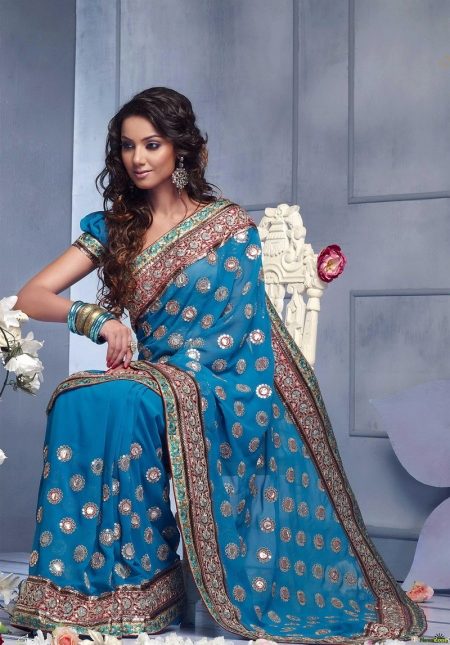
The outfit is suitable for all occasions. For big events and holidays, the sari is handmade. The master draws up a pattern for a garment, and after completing the work, destroys the sketch. Thus, the sari is unique.
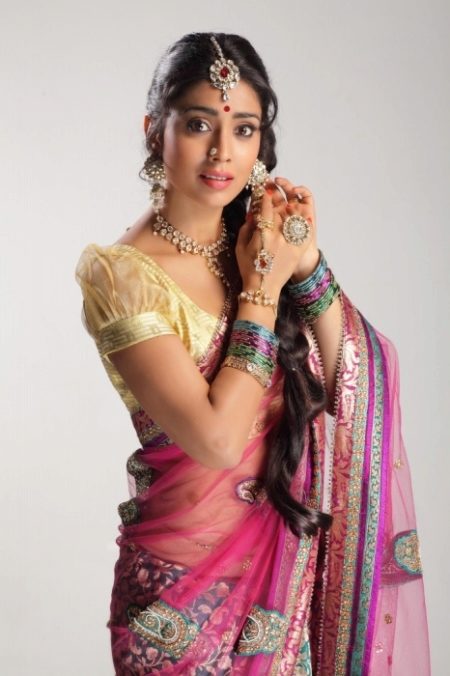
Another type of traditional women's clothing is salwar kameez. So called pants with a tunic. The costume can be made in different ways, the width of the pants and the length of the tunic vary. The color variety of outfits is also very wide.
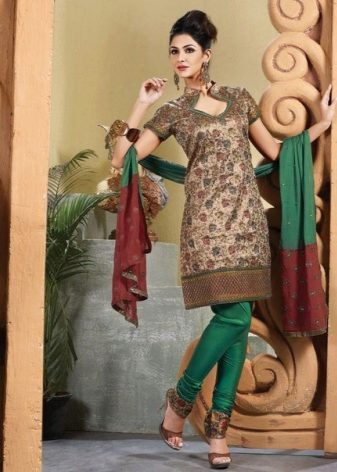
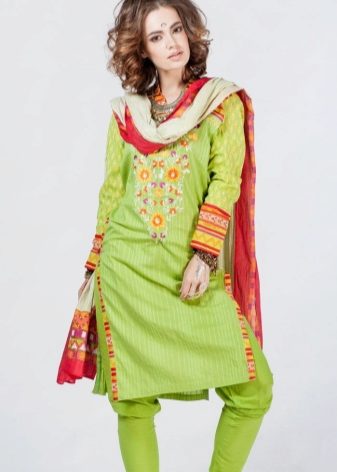
There are slits on the sides of the tunic so as not to restrict movement. Her collar is usually decorated with lurex and bead embroidery; sequins and sequins are used.
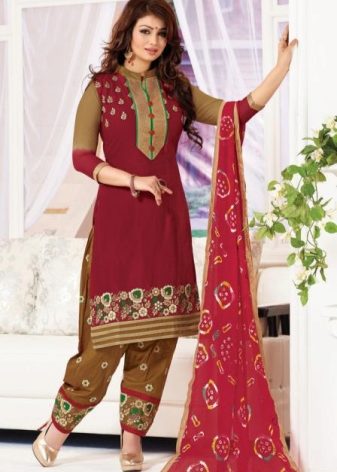

The outfit is complemented by a long scarf-cape - dupatta.
For large celebrations, another outfit is provided - lenga. This is a combination of a long skirt and a short blouse. Like the salwar kameez, the lenga is worn with a dupatta.


It is impossible to pass over in silence such elements of the national costume as jewelry and makeup. Since ancient times, women have used paints for their faces, nails and hands.And without a huge number of beads, necklaces, rings, earrings, bracelets for hands and feet, a complete Indian outfit is simply unthinkable.
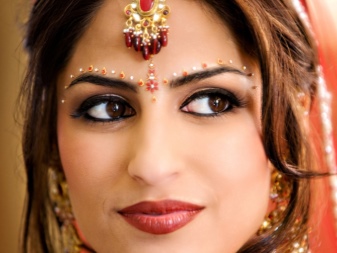

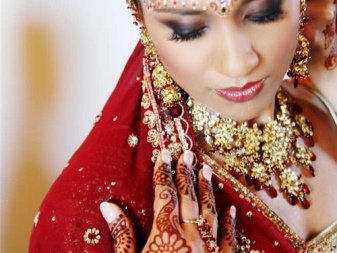
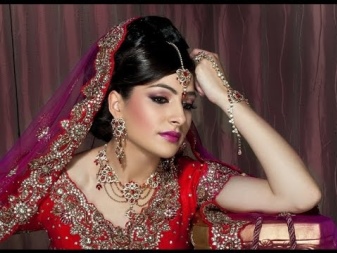
Since Indian clothes are comfortable and made of fine natural fabrics, they are also suitable for children.
However, for girls there is a kind of dress - pata-pavadai. It has a conical shape and is sewn from colored silk. The dress is adorned with a golden border. It is worn on special occasions.
Also, girls and girls before marriage wear a long skirt and a short jacket.
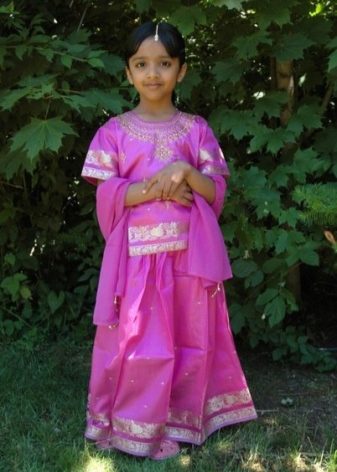
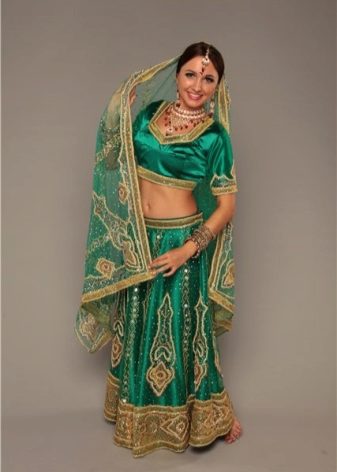
Modern models
Western clothing is permeating everywhere. India is not left out. Today you can see European clothes not only on visitors, but also on indigenous people, it is widely represented in stores. Jeans are not uncommon as casual wear.
However, mini-skirts and low-cut dresses are not very appropriate: in India, it is not customary to flaunt exposed parts of the body. She, like no other country, has retained her adherence to her national style of dress to this day. All its types are common both in the city and in the countryside, it is worn both on holidays and on weekdays.
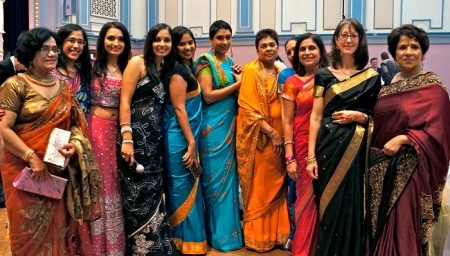
Of course, individual details undergo changes, they are influenced by modern European fashion. Modern fabrics are used, patterns change, the cut of frock coats, tunics, trousers varies, innovations in decors are applied.
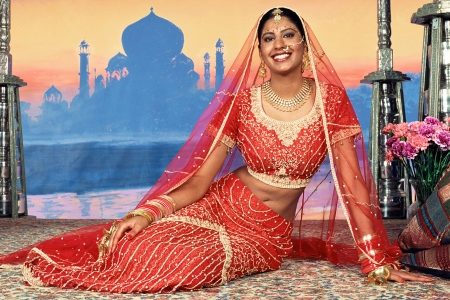
There is also a mixture of styles. Men wear a turban with a business suit. You can see a combination of a national tunic or shirvani with modern cut trousers and jeans. And women flaunt in fashionable skirts.
But, nevertheless, the Indian costume does not lose its uniqueness.
Designers are working on Indian costume, and chic models appear on the catwalks.The Internet offers an abundance of beautiful women's and men's outfits.
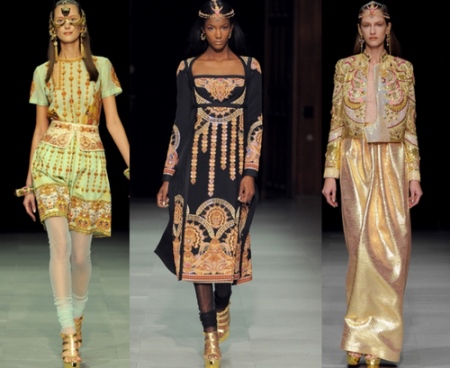
It is obvious that India will not lose its identity for a long time, its inhabitants will wear national costumes. And who knows, maybe someday we will put on these wonderful beautiful outfits?
